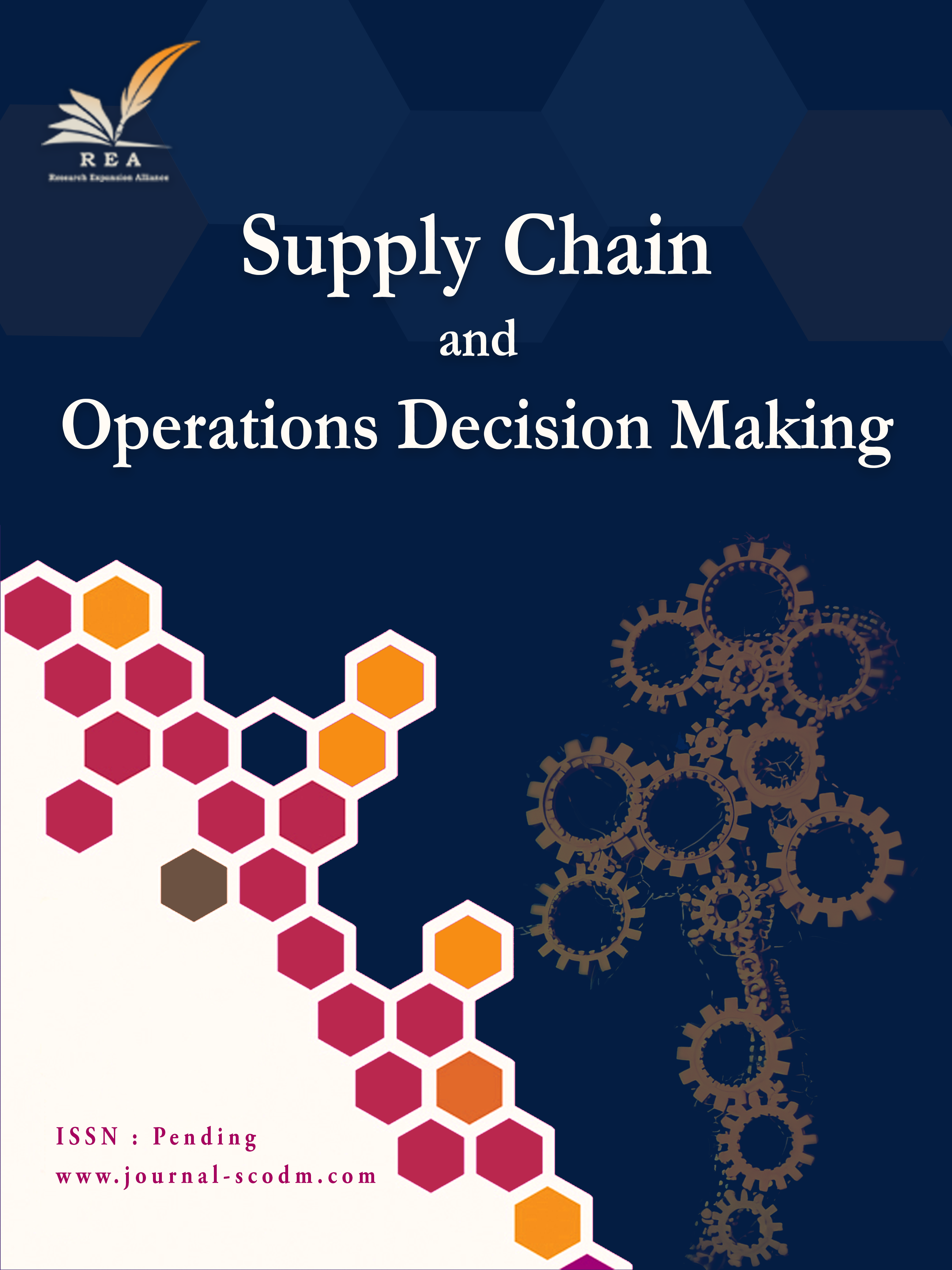Al and loT Integration for Optimizing Public Transportation Systems
Abstract
This research introduces an integrated framework that combines Artificial Intelligence (AI) and Internet of Things (IoT) technologies to enhance public transportation systems. The framework addresses critical urban mobility challenges, such as service reliability, resource utilization, and passenger satisfaction, through a multi-layer architecture designed for intelligent decision-making and optimization. The methodology involves deploying IoT sensor networks across vehicle fleets, transit stations, and traffic intersections to collect real-time data. This data is processed using advanced AI techniques, including deep learning models like Long Short-Term Memory (LSTM) networks for demand prediction and Temporal Convolutional Networks (TCN) for pattern recognition, which improved accuracy by 27.3% compared to traditional methods. Additionally, reinforcement learning algorithms, such as deep q-networks and proximal policy optimization, significantly reduced wait times by 32.8%. The system features a three-tier architecture comprising edge, fog, and cloud layers, ensuring efficient local processing and global optimization with a response latency of under 50 milliseconds and high reliability (99.99%). Results showed substantial improvements: a 24.6% reduction in vehicle idle time, a 42.7% decrease in average waiting time, and a 21.8% reduction in operational costs. This research contributes to the field by introducing adaptive learning algorithms and a scalable deployment architecture. The findings have implications for urban planning, economic efficiency, and social benefits, enhancing public service accessibility and overall user experience in urban transportation systems.
Keywords:
Public transportation optimization, Artificial intelligence, Internet of things, Smart cities, Machine learning, Real-time systemsReferences
- [1] Chavhan, S., Gupta, D., Gochhayat, S. P., N, C. B., Khanna, A., Shankar, K., & Rodrigues, J. J. P. C. (2022). Edge computing AI-IoT integrated energy-efficient intelligent transportation system for smart cities. ACM transactions on internet technology, 22(4), 1–18. https://doi.org/10.1145/3507906
- [2] Chavhan, S., Gupta, D., Chandana, B. N., Khanna, A., & Rodrigues, J. J. P. C. (2019). IoT-based context-aware intelligent public transport system in a metropolitan area. IEEE internet of things journal, 7(7), 6023–6034. https://doi.org/10.1109/JIOT.2019.2955102
- [3] Rajkumar, Y., & Santhosh Kumar, S. V. N. (2024). A comprehensive survey on communication techniques for the realization of intelligent transportation systems in IoT based smart cities. Peer-to-peer networking and applications, 17(3), 1263–1308. https://doi.org/10.1007/s12083-024-01627-9
- [4] Zhu, L., Yu, F. R., Wang, Y., Ning, B., & Tang, T. (2018). Big data analytics in intelligent transportation systems: A survey. IEEE transactions on intelligent transportation systems, 20(1), 383–398. https://doi.org/10.1109/TITS.2018.2815678
- [5] Elkhouly, M., & Alhadidi, T. (2024). Ride-sharing determinants: spatial and spatio-temporal bayesian analysis for chicago service in 2022. ArXiv preprint arxiv:2406.11590. https://doi.org/10.48550/arXiv.2406.11590
- [6] Ge, E., Su, M., Zhao, R., Huang, Z., Shan, Y., & Wei, X. (2021). Geographical disparities in access to hospital care in Ontario, Canada: a spatial coverage modelling approach. BMJ open, 11(1), e041474. https://bmjopen.bmj.com/content/11/1/e041474.abstract
- [7] Vlahogianni, E. I., Kepaptsoglou, K., Tsetsos, V., & Karlaftis, M. G. (2016). A real-time parking prediction system for smart cities. Journal of intelligent transportation systems, 20(2), 192–204. https://doi.org/10.1080/15472450.2015.1037955
- [8] Zhang, J., Wang, F. Y., Wang, K., Lin, W. H., Xu, X., & Chen, C. (2011). Data-driven intelligent transportation systems: A survey. IEEE transactions on intelligent transportation systems, 12(4), 1624–1639. https://doi.org/10.1109/TITS.2011.2158001
- [9] Shafik, W., Matinkhah, S. M., & Ghasemzadeh, M. (2020). Internet of things-based energy management, challenges, and solutions in smart cities. Journal of communications technology, electronics and computer science, 27, 1–11. https://ojs.jctecs.com/index.php/com/article/view/302
- [10] Zhang, J., Shen, D., Tu, L., Zhang, F., Xu, C., Wang, Y., … Li, Z. (2017). A real-time passenger flow estimation and prediction method for urban bus transit systems. IEEE transactions on intelligent transportation systems, 18(11), 3168–3178. https://doi.org/10.1109/TITS.2017.2686877
- [11] Di, X., & Liu, H. X. (2016). Boundedly rational route choice behavior: A review of models and methodologies. Transportation research part b: methodological, 85, 142–179. https://doi.org/10.1016/j.trb.2016.01.002
- [12] Gouge, B., Dowlatabadi, H., & Ries, F. J. (2013). Minimizing the health and climate impacts of emissions from heavy-duty public transportation bus fleets through operational optimization. Environmental science & technology, 47(8), 3734–3742. https://pubs.acs.org/doi/abs/10.1021/es304079p
- [13] Yan, X., Levine, J., & Zhao, X. (2019). Integrating ridesourcing services with public transit: An evaluation of traveler responses combining revealed and stated preference data. Transportation research part c: emerging technologies, 105, 683–696. https://doi.org/10.1016/j.trc.2018.07.029
- [14] Chen, X. W., & Lin, X. (2014). Big data deep learning: challenges and perspectives. IEEE access, 2, 514–525. https://ieeexplore.ieee.org/abstract/document/6817512
- [15] Salama, R., Mohapatra, H., Tülbentçi, T., & Al-Turjman, F. (2025). Deep learning technology: enabling safe communication via the internet of things. Frontiers in communications and networks, 6, 1416845. https://doi.org/10.3389/frcmn.2025.1416845
- [16] Hoppe, J., Schwinger, F., Haeger, H., Wernz, J., & Jarke, M. (2023). Improving the prediction of passenger numbers in public transit networks by combining short-term forecasts with real-time occupancy data. IEEE open journal of intelligent transportation systems, 4, 153–174. https://doi.org/10.1109/OJITS.2023.3251564
- [17] Golchoubian, M., Ghafurian, M., Dautenhahn, K., & Azad, N. L. (2023). Pedestrian trajectory prediction in pedestrian-vehicle mixed environments: A systematic review. IEEE transactions on intelligent transportation systems, 24(11), 11544–11567. https://doi.org/10.1109/TITS.2023.3291196
- [18] Jalaney, J., & Ganesh, R. S. (2019). Review on IoT based architecture for smart public transport system. International journal of applied engineering research, 14(2), 466–471. https://www.researchgate.net
- [19] Zhao, X., Wang, Y., Li, L., & Delahaye, D. (2022). A queuing network model of a multi-airport system based on point-wise stationary approximation. Aerospace, 9(7), 390. https://doi.org/10.3390/aerospace9070390
- [20] Noursalehi, P., Koutsopoulos, H. N., & Zhao, J. (2021). Dynamic origin-destination prediction in urban rail systems: A multi-resolution spatio-temporal deep learning approach. IEEE transactions on intelligent transportation systems, 23(6), 5106–5115. https://doi.org/10.1109/TITS.2020.3047047
- [21] Khaidem, L., Luca, M., Yang, F., Anand, A., Lepri, B., & Dong, W. (2020). Optimizing transportation dynamics at a city-scale using a reinforcement learning framework. IEEE access, 8, 171528–171541. https://ieeexplore.ieee.org/abstract/document/9200608


